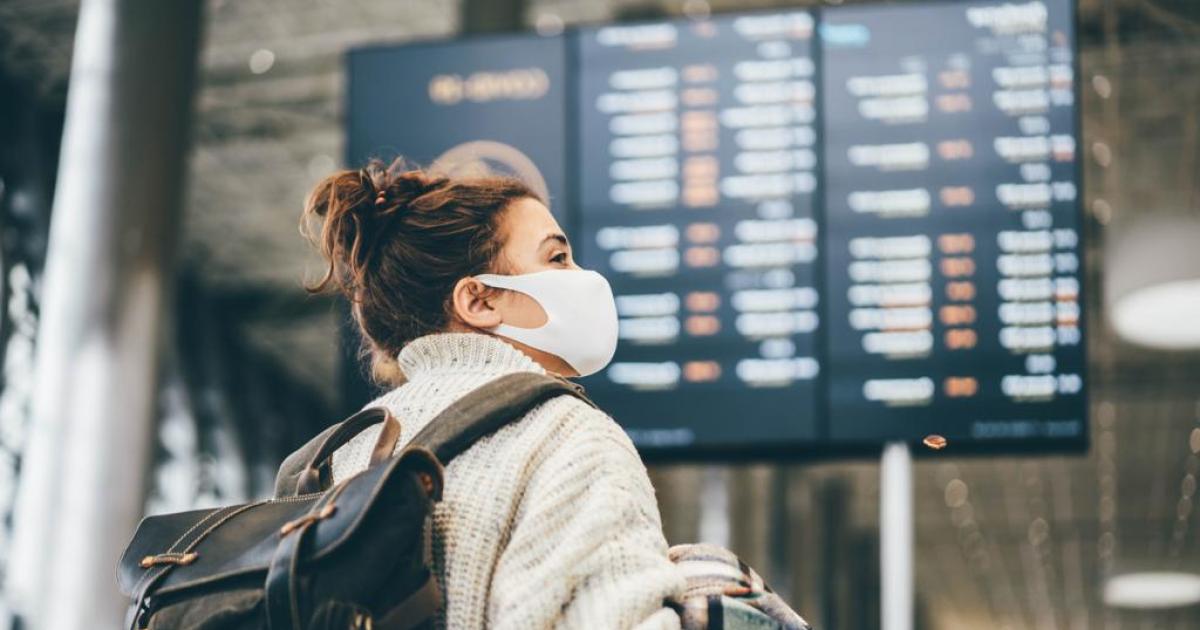Source: Hale et al., 2023.
Note: As at 1 January 2023. The term “international travel controls” is used by Oxford, and includes screening arrivals, quarantining arrivals, banning arrivals or total border closure. It is also important to note that categories are COVID-19-related only and do not reflect other travel restrictions that may have already been in place, such as those related to visa restrictions, entry bans based on specific citizens, and departure or exit restrictions.
At the regional level, there have been significant differences in COVID-19 response measures, particularly travel restrictions (see Appendix B). Over a sustained period, Asia maintained the highest rates of all types of restriction throughout the first two years of the pandemic, whereas Africa experienced gradual declines in all types except international travel restrictions. The patterns in Europe differ markedly from elsewhere, with easing of international and internal travel restrictions during the summer holidays in mid-2020 and mid-2021, and a sharp drop in all restrictions from May 2022. But the wider story is consistent across world regions: more than three years after the onset of the COVID-19 pandemic, there are many more COVID-19-related restrictions on mobility than existed in December 2019, and in some world regions, international travel is still tightly controlled. For example, on 1 January 2023 over 30 African States maintained international travel controls that did not exist prior to the pandemic.
The imposition of international travel restrictions early in the acute phase of the pandemic underscored how migration has been increasingly “securitized” by States, sometimes at the expense of human rights and proportionality of responses to national emergencies.8 Some analysts anticipated that States might use the pandemic to undermine human rights through the imposition and continuation of extraordinary measures well beyond the COVID-19 public health emergency:
[A] state of emergency can sometimes be used as a pretext for abuses, such as arbitrary detention, censorship, or other authoritarian measures. … There are increasing concerns that some governments might capitalize on emergency powers to undermine democratic principles, eliminate dissent, and violate the principles on necessity and proportionality. Most problematic are expansions of executive powers and repressive measures, which might continue after the national emergency in the respective countries.9
The current situation bears out such fears. Over two and a half years after the global pandemic was declared, and more than 20 months after the first vaccines were rolled out, several countries still imposed significant international travel and movement restrictions, despite substantially reduced public health risks. So-called “zero-covid” policies continued in some locations, with commentators pointing to population control measures being given priority over economic and social recovery.10
Stranded migrants during the COVID-19 crisis
The impacts on migrants who had become stranded due to travel restrictions and were unable to return home or move elsewhere were profound for some groups, particularly those who were already in exploitative or otherwise vulnerable situations prior to COVID-19. By mid-July 2020, an estimated 2.75 million international migrants had become stranded globally, with the highest numbers stranded in the Middle East and North Africa region (and Gulf countries especially).11
Immediate impacts involved loss of employment due to COVID-19 lockdowns and other measures (including in countries without adequate social protection systems), falling into irregular status and facing detention or deportation, major health-related impacts such as the increased risk of COVID-19 infection and illness, and major family-related disruptions. In many cases, the effects of these impacts were discernibly gendered due, for example, to underlying structural differences in labour markets and gender power differentials connected to temporal and geographic aspects. For instance, domestic migrant workers were particularly hard hit during the pandemic, the majority of whom continue to be female (and who have been migrating along specific corridors for decades).12 See the migrant’s voice text box below for a female domestic worker’s experience of becoming stranded during COVID-19.
One of the more dominant and recurring findings of migration research globally relates to the significant differences experienced by migrants of different genders in terms of the overall burden of care, with consequent mental and physical health impacts.13 While there has been little in the way of focus on stranded migrants as a distinct cohort, the added pressure of being stranded – and often without support – heralded some gender-based responses from women’s groups in different locations around the world. In India, for example, self-inspired responses of women’s groups included voluntary community kitchens that provided free meals to stranded migrants, some of which continued for almost five months.14
Indirect but nevertheless profound gender-related impacts on safety and well-being connected to COVID-19 measures are likely to be felt for generations to come. In some Indian municipalities, for example, child-protection authorities reported that COVID-19 resulted in an increase in (girl) child marriages due to disrupted education, household economic shocks, increasing reliance on marriage payments, disruptions to local government services and programmes and increased guardian-related deaths due to COVID-19.15
Migrant’s voice: Trapped during COVID-19
Htoo Gay War quit her job as a domestic worker in January [2020] because her employer refused to allow her to take one day off each week – just before Thailand reported its first case of the novel coronavirus pandemic. Three months later, the pregnant 30-year-old from Myanmar has been unable to find a new job as Thailand has declared a state of emergency, shutting malls, schools and bars to curb the spread of the virus, which has infected some 3,000 people.
“I want to go home to be with my parents, because at least they can take care of me while I’m out of work and don’t have any money”, she said from the central province of Pathum Thani.
“But I can’t go back now that the borders are closed”, she said, adding that her family are scraping by on her husband’s salary of 8,000 baht ($247) per month.
Thailand has about 2.8 million registered migrant workers mainly from Myanmar, Cambodia and Laos, government figures show. But the United Nations estimates that 2 million more work informally across the country.
At least half a million migrant workers in Thailand have been left unemployed as a result of the coronavirus crisis, estimates the Migrant Working Group, a network of non-governmental organisations promoting migrant rights.
Source: Abridged extract from Wongsamuth, 2020.










